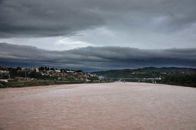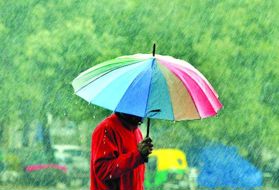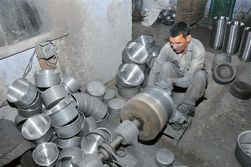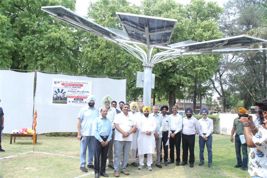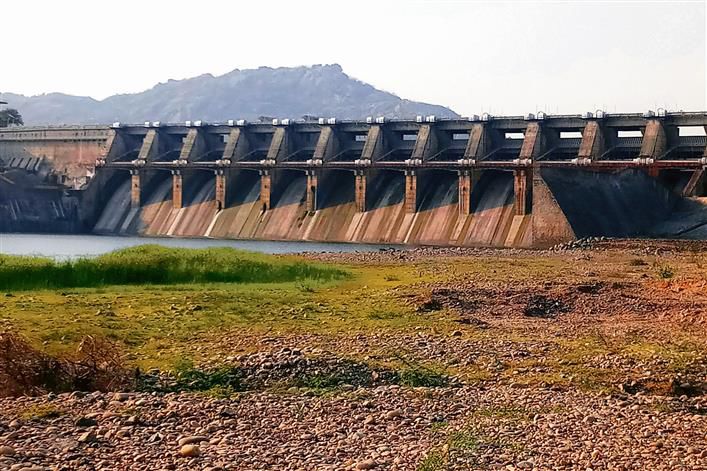
Danger: The number of disasters related to dams and hydropower projects is rising rapidly. iStock
Himanshu Thakkar
Coordinator, South Asia Network on Dams, Rivers & People
AS a somewhat belated summer in north India reaches its peak, with Delhi and surrounding areas reeling under a heatwave, there is an increasing fear of water scarcity. To highlight this situation, the media generally cites live storage in some 150 reservoirs in the Central Water Commission’s (CWC) weekly reservoir bulletin (WRB), which is published every Thursday afternoon (why this cannot be given on a daily basis is a mystery).
The first thing to note about the water storage position given in CWC’s WRB is that this is expected to be low when we are getting ready to welcome the southwest monsoon (SWM) that has already arrived in the Andaman and Nicobar Islands. According to the Bhakra Beas Management Board (BBMB), the reservoir-filling period for Bhakra, Pong and Pandoh reservoirs began on May 21.
Reservoirs, in any case, are constructed to use up water before the onset of the next monsoon. An optimum utilisation of the created capacity would mean that the live storage capacity of the reservoirs should be the bare minimum when fresh inflows into these reservoirs start. To have a substantial quantity of water in these reservoirs when fresh inflows begin would also be non-optimal, as that would mean much less capacity in these reservoirs to store them. It would also mean an increased potential for avoidable flood-related disasters.
Since the IMD (India Meteorological Department) has already forecast above-normal rainfall in SWM 2024 and because the La Nina factor is likely to be active during the monsoon, which generally brings surplus rain, the lower storages we have at the onset of the SWM, the better it is for us.
According to the CWC’s bulletin, north India includes Himachal Pradesh, Punjab and Rajasthan. But strangely, Uttarakhand, which is also a part of north India, is included in east India. And the rest of north India (Haryana, Jammu and Kashmir, Delhi and Chandigarh) is absent since these states/UTs do not have any water reservoir worthy of being included in the CWC list.
So, in north India, the CWC bulletin includes 10 reservoirs, where the live water storage on May 16 was 5.618 BCM (billion cubic metres) or 29 per cent of the total live capacity. This is only 3 per cent below the 10-year average figure of 32 per cent, which is defined as ‘normal’. So while this is lower than last year’s or normal storage, it cannot be called alarming. India had rainfall 5.55 per cent below the normal in SWM 2023, so some deficit in storage is expected. However, north India also had more than one round of severe floods during SWM 2023, so we need not have alarmingly low reservoir levels.
The key question here is: does the CWC’s WRB provide accurate or even widely applicable figures for water available across India? The CWC’s bulletin includes water storage figures in just 150 reservoirs across India. The country has 6,138 completed large dams, as per the CWC’s National Register of Large Dams (September 2023). Thus, the CWC’s WRB includes less than 2.5 per cent of India’s large dam reservoirs. In terms of the storage capacity, it includes a larger proportion of live storage behind these completed large dams, but the key point is that it does not provide the applicable useful information for a large majority of Indians, as it is the smaller local reservoirs that are useful for them and not some distant mega water body.
If the CWC wanted to provide a more accurate picture of water stored in India’s reservoirs, it could easily do so as illustrated by the SANDRP (South Asia Network on Dams, Rivers & People) in 2018 (‘How India Measures Water Storages’). We showed that state government websites provided the water storage position in 3,863 reservoirs across India more frequently and accurately than possibly the CWC’s WRB.
India has lakhs of smaller water reservoirs and millions of groundwater aquifers that people depend on, which provide the largest proportion of the water India uses, and clearly, the CWC’s weekly bulletin does not provide accurate water availability figures that the vast majority of Indians depend on. The BBMB’s reservoirs, for which the filling period started last week, get their water in the summer from the melting of glaciers and other snow masses, which is a different source altogether, and for that we have no figures.
But this outdated focus on large dams by the authorities in India, neglecting all other options, has also rubbed off on the media, it seems. The world is realising that this advocacy of large dams is no longer useful. In fact, there is an increasing movement across the world to decommission large dams. With the increasing impacts of climate change on rainfall patterns, this movement is only going to gain strength.
Moreover, in 2023-24, India saw one of the lowest generations from large hydropower dams. The number of disasters related to dams and hydropower projects is rising rapidly. Next month, when peak power demand will be the highest, hydropower generation is projected to be at the lowest. The operators of the Tehri project in north India have added to the bad news by saying that power generation from the project will be suspended from June 1. This will also affect the water supply in Delhi and UP.
The main question in the context of water scarcity is: what is the most optimal way of maximum harvesting, storage, recharge and utilisation of rainwater and flows? The key component to achieving this objective is the catchment of any river. The greater the capacity of the catchment to harvest, hold, store and recharge rainwater at its source, the closer we will be to achieving this objective. This capacity of catchments can be improved when there are more natural forests, more water bodies and more carbon content in the soil and when we have a greater ability to recharge the groundwater. Thus, we will have more wetlands in the catchments and more floodplains will be saved from destruction. The barometers for this are our rivers. If our catchments are healthy, rivers will have more distributed flows, particularly in the post-monsoon months.
‘Sponge cities’ is the name of the scheme for our urban areas. It is all about harvesting, holding, storing and recharging higher proportion of the rainwater and flows in the city. The sooner we adopt these measures and implement commensurate policies and programmes, the smarter our cities will become.
Join Whatsapp Channel of The Tribune for latest updates.











